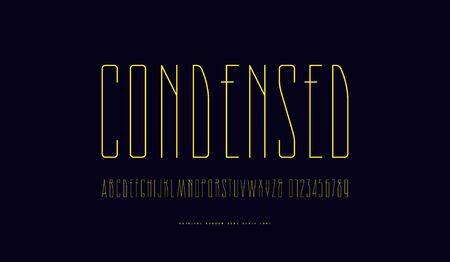Introduction to Feng Shui: Bridging East and West
Feng Shui, pronounced “fung shway,” is an ancient Chinese practice that focuses on creating harmony between people and their living environments. While its roots go back thousands of years in China, the basic goal remains relevant today: to support well-being, balance, and positive energy in our daily lives. As more Americans look for ways to create peaceful and welcoming homes, Feng Shui has found a new home in the United States—adapting its wisdom to fit modern lifestyles and American values.
What Is Feng Shui?
At its core, Feng Shui is about arranging spaces so that energy (called “chi”) can flow smoothly. Traditional Feng Shui uses tools like the Bagua map (an energy blueprint) and considers five elements (wood, fire, earth, metal, water). The aim is to achieve a healthy balance among these elements within your home or workspace.
Table: Core Feng Shui Elements & American Home Applications
| Element | Traditional Symbolism | American Home Example |
|---|---|---|
| Wood | Growth, vitality | Houseplants, wooden furniture |
| Fire | Passion, transformation | Candles, fireplace, warm lighting |
| Earth | Stability, nourishment | Ceramic pots, stone countertops |
| Metal | Clarity, precision | Metal picture frames, stainless appliances |
| Water | Flow, abundance | Aquarium, mirrors, blue accents |
Feng Shui Meets American Values and Lifestyles
Modern American homes come in many shapes and sizes—from city apartments to suburban houses and rural retreats. Adapting Feng Shui means respecting both the ancient philosophies and the realities of contemporary life. For example:
- Simplicity and Comfort: Many Americans value open floor plans and functional spaces. Feng Shui can support this by encouraging uncluttered rooms and natural light.
- Diversity: With diverse cultures across the country, Feng Shui offers flexible guidelines rather than strict rules—making it easy to blend with personal tastes and family traditions.
- Sustainability: The emphasis on harmony with nature fits well with eco-friendly trends like using plants or recycled materials at home.
- Personal Expression: Feng Shui isnt about copying a specific style; its about making choices that feel right for you and your family while supporting good energy flow.
The Universal Message of Harmony
No matter where you live or what your background is, the heart of Feng Shui is about creating a home that feels good—safe, supportive, and full of life. By bridging Eastern wisdom with Western sensibilities, anyone can benefit from the timeless principles of Feng Shui in a way that feels modern and meaningful.
2. Key Principles of Modern Feng Shui
Understanding Balance and Harmony
At its core, Feng Shui is all about creating a sense of balance and harmony in your home. In modern American homes, this means arranging furniture and décor to support both comfort and good energy flow. A balanced space feels welcoming—not too cluttered, not too empty. Try to distribute colors, shapes, and objects evenly throughout each room. For example, if one side of the living room has a heavy bookshelf, consider adding a floor lamp or tall plant on the opposite side to maintain visual balance.
The Importance of Flow (Qi)
“Qi” (pronounced “chee”) refers to the natural energy that moves through every space. Good Feng Shui encourages Qi to flow smoothly without being blocked by obstacles like tightly packed furniture or closed doors. To improve the flow in your home:
- Keep main pathways clear—don’t block hallways with shoes or bags.
- Arrange seating areas so people can move around easily.
- Open windows regularly to let in fresh air and natural light.
The Five Elements in Modern Homes
Feng Shui uses five elements—Wood, Fire, Earth, Metal, and Water—to create a dynamic environment. Each element brings different qualities to a space. Here’s how you can introduce these elements into an American home:
| Element | Characteristics | Modern Applications |
|---|---|---|
| Wood | Growth, vitality, flexibility | Houseplants, wooden furniture, green or blue colors |
| Fire | Passion, energy, transformation | Candles, fireplaces, red or orange accents |
| Earth | Stability, nourishment, grounding | Ceramic décor, earthy tones (beige, brown), square shapes |
| Metal | Clarity, precision, efficiency | Metal frames, lamps, white or gray colors |
| Water | Flow, abundance, renewal | Aquariums, mirrors, blue or black hues |
Applying Feng Shui in Everyday Life
You don’t need to follow every traditional rule to enjoy the benefits of Feng Shui. Small adjustments—like letting more sunlight in or rearranging your living room for better movement—can make a big difference. The key is to be mindful of how your home feels and make changes that support your well-being and lifestyle.

3. Adapting Feng Shui for American House Architecture
Understanding Common American Home Layouts
Modern American homes often feature open floor plans, spacious kitchens, attached garages, and large windows. These layouts can be quite different from traditional Chinese homes that inspired Feng Shui principles. To make Feng Shui work in your space, its important to adapt the ancient wisdom to the unique features of American architecture.
Main Features and Feng Shui Considerations
| Feature | Common in US Homes | Feng Shui Adaptation Tips |
|---|---|---|
| Open Floor Plan | Yes | Use area rugs, furniture, or plants to define spaces and guide energy (chi) flow. |
| Attached Garage | Yes | Keep garage doors closed and clutter-free; use a welcoming entryway with bright lighting for the main entrance. |
| Large Windows | Yes | Add curtains or blinds to control energy flow and avoid excess energy escaping. Place plants to soften sharp lines. |
| Kitchens Facing Living Areas | Yes | Use a kitchen island or screen to separate cooking from living areas, minimizing direct line of sight. |
| Bungalow & Ranch Styles | Yes | Create balance by using décor and color to ground long hallways or large single-story spaces. |
Materials: Blending Tradition with Modern Aesthetics
American homes are built with wood, brick, drywall, and glass—different from traditional stone or clay houses in China. Don’t worry! You can still bring good Feng Shui vibes by balancing the five elements (wood, fire, earth, metal, water) through décor choices:
- Wood: Use wooden frames, shelves, or houseplants.
- Fire: Add candles, warm lights, or touches of red/orange in pillows or art.
- Earth: Decorate with ceramics, stones, or earth-tone rugs.
- Metal: Incorporate metal picture frames, lamps, or hardware.
- Water: Try a small fountain, aquarium, or blue-colored accessories.
Culturally Compatible Feng Shui Tips for Americans
- Main Entrance: Make sure your front door is visible and inviting. Clear away shoes and clutter to let positive energy in.
- Sofa Placement: Place your sofa against a solid wall if possible. Avoid sitting with your back to the main entrance to feel more secure.
- Bedrooms: Keep beds away from direct alignment with the door and avoid placing them under windows. Use soft lighting for calmness.
- Kitchens: Keep knives stored away and counters tidy. Use fresh fruit bowls as a symbol of abundance.
- Laundry & Utility Rooms: Keep these spaces organized and well-lit to avoid stagnant energy buildup.
Aesthetic Harmony Matters Too!
You don’t need to give up your personal style when adding Feng Shui elements. Choose colors and materials that fit your taste while applying simple Feng Shui ideas—like keeping pathways clear and using artwork that makes you feel happy at home. With some thoughtful tweaks, you can enjoy both modern comfort and good energy in your American home!
4. Practical Feng Shui Tips for Everyday Living
Enhancing Your Living Room
The living room is the heart of most American homes—a space for gathering, relaxing, and connecting. To boost positive energy (or “chi”) in your living room, start with the basics: keep the area clutter-free and well-lit. Choose seating arrangements that encourage conversation and make everyone feel included. Avoid placing sofas with their backs directly to doors or windows; instead, position seats so you can see the entrance, which brings a sense of security and control.
| Feng Shui Tip | How to Apply in Your Home |
|---|---|
| Add Houseplants | Place a healthy plant in a corner to bring life and vitality into the space. |
| Use Mirrors Wisely | Hang mirrors to reflect light and expand energy but avoid placing them directly facing doors. |
| Balance Elements | Mix wood, metal, fabric, and stone decor for harmony. |
Inviting Good Energy into Your Kitchen
The kitchen represents nourishment and family health. In modern American homes, it’s often open-plan, making flow even more important. Keep counters clear of unnecessary items, use bright lighting, and add fresh fruit or flowers for vibrancy. If possible, avoid having the stove directly across from the sink or refrigerator—this can create conflicting energies between fire and water elements.
Quick Kitchen Feng Shui Checklist:
- Keep appliances clean and in working order.
- Display healthy foods to encourage good eating habits.
- Add a splash of red decor for warmth and energy.
- Open windows regularly for fresh air.
Creating Restful Bedrooms
Your bedroom should be a sanctuary for rest and renewal. Position your bed so that you can see the door without being directly in line with it—this is called the “command position.” Avoid storing things under your bed if possible, as this can disrupt restful energy. Choose soothing colors like soft blues or greens, limit electronics, and keep personal items organized to support relaxation and intimacy.
Bedroom Do’s & Don’ts Table:
| Do’s | Don’ts |
|---|---|
| Use soft bedding and gentle lighting. | Avoid mirrors facing the bed. |
| Incorporate calming artwork. | Don’t pile up laundry or clutter. |
| Add a small plant for fresh air. | Avoid work materials in the bedroom. |
Energizing Your Home Office
The rise of remote work makes home offices essential in many American households. For maximum productivity, place your desk so you face the door but aren’t directly aligned with it—this gives you control over your space while avoiding distractions. Keep your workspace tidy, use organizers to manage paperwork, and personalize with meaningful objects like photos or awards. Bringing in a small plant or natural light can help reduce stress and increase focus.
- Select an ergonomic chair for comfort during long hours.
- Avoid sitting with your back to a window—use blinds or curtains if needed.
- Use uplifting colors like green or blue to inspire creativity and calmness.
- Add a desk lamp with warm light for cozy energy during late work sessions.
5. Debunking Myths and Understanding Cultural Sensitivity
Common Misconceptions About Feng Shui
Feng Shui often gets misunderstood in the United States. Some people think it’s just about moving furniture or decorating with lucky symbols, but there’s much more to it. Let’s clear up a few common myths:
| Myth | Reality |
|---|---|
| Feng Shui is just about furniture arrangement. | While placement matters, Feng Shui also involves energy flow, color choices, and intention. |
| You must buy expensive items or traditional Chinese décor. | You can use what you already have at home. The focus is on balance, not on costly accessories. |
| Feng Shui is a religious practice. | Feng Shui is rooted in ancient philosophy and does not require religious beliefs. |
| It only works in Asian-style homes. | Feng Shui principles can be adapted to any architectural style or cultural background. |
Respectful Adaptation for American Homes
Adapting Feng Shui in an American context means respecting its roots while embracing diversity. Instead of copying every traditional element, focus on the core ideas: harmony, comfort, and positive energy. For example, you might use calming colors that suit your taste or arrange your living room to create welcoming spaces for family and friends. The key is to apply these principles in a way that feels authentic for your lifestyle.
How to Honor Ancient Wisdom in Modern Spaces
- Educate Yourself: Learn about Feng Shui’s history and meaning before making changes at home.
- Acknowledge the Origins: Recognize and appreciate that these concepts come from Chinese culture.
- Create Inclusive Spaces: Use Feng Shui to make your home welcoming to all backgrounds and traditions.
- Add Personal Touches: Blend Feng Shui guidelines with your own family heritage, artwork, or traditions for a space that reflects who you are.
Cultural Sensitivity Matters
When applying Feng Shui, it’s important to avoid stereotypes or superficial uses of cultural symbols. Instead of using items just because they look “exotic” or “lucky,” choose objects and arrangements that are meaningful to you. By being thoughtful and respectful, you honor both the tradition of Feng Shui and the diversity found in contemporary American homes.


